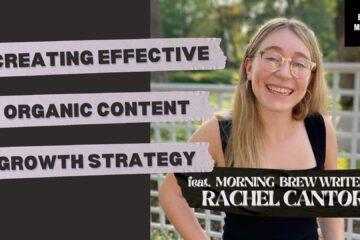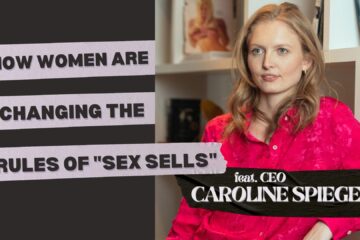
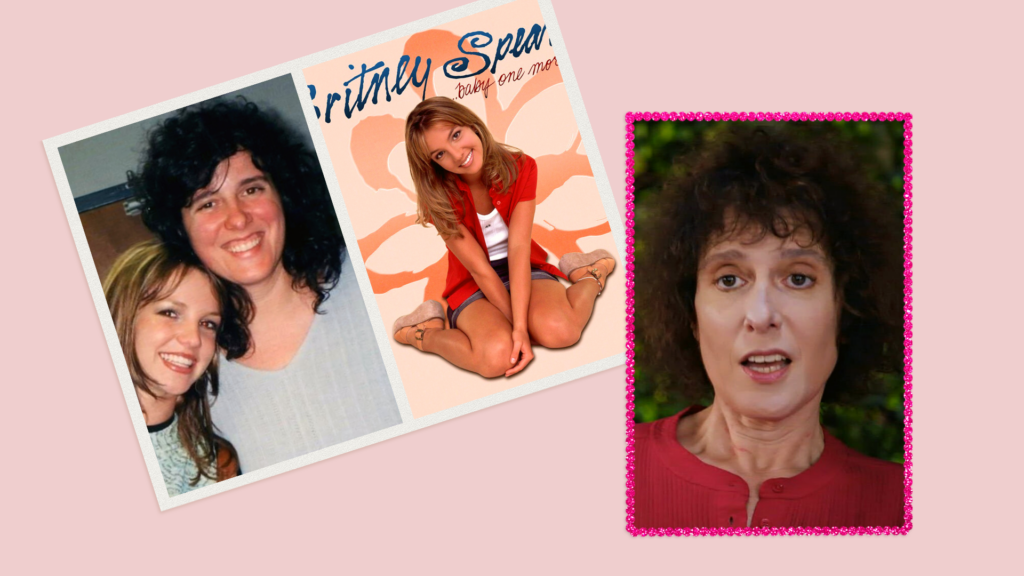
Developing Britney Spears’ Brand: An Interview with Kim Kaiman
I watched the Framing Britney documentary, and there were a lot of thoughts that ran through my mind. And I’m not going to go into most of those. But as a marketer, I also wanted to know more about one of the speakers — Kim Kaiman, who played a role in developing Britney Spears’ brand and marketing strategy.
Kim was a marketing manager at Jive Records and many other record companies during a period of time where labels had complete control over creating musical superstar brands. (This was before Soundcloud, YouTube, TikTok, and other digital channels emerged as opportunities for aspiring artists to begin creating their own personal brand.)
She had a front row seat not only to the formation of Britney Spears’ brand, but she also worked on marketing and branding for artists like Hootie & the Blowfish, Daft Punk, and others.
Want to get exclusive extras and early access to content like this? Subscribe to my newsletter!
I reached out to Kim, and (miraculously) she agreed to speak with me.
We talked about a variety of topics, including:
- What it was like watching the development of Britney Spears’ brand,
- What’s changed in branding since then,
- The campaign she enjoyed working on most,
- The time she worked with Mick Jagger,
- And what she’d do differently today.
Who is Kim Kaiman?
My name is Kim Kaiman, and I have been a marketer for, I guess, now a little over 30 years.
That kind of gives you an idea of how old I am, which is not good, but it’s a passion that I have.
I have always been in the area of entertainment marketing. I started out thinking that I was going to go into radio. That’s what I studied in college. I have a degree in communications from Ithaca College. I was a broadcast TV and radio major.
And when I got out of college and got my first job in radio, I realized there’s no money in it, except if you’re Howard Stern. So I realized that the real reason I wanted to go into radio was because I was always really passionate about music and wanted to talk about music.
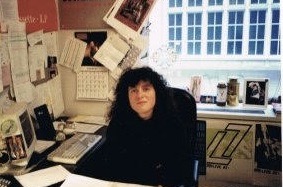
And so I was given some advice by a guy who was head of radio promotion at Arista Records at the time who recommended I go into publicity.
I was a music publicist for about six years. And after doing that and working with lots of different kinds of bands.
Everybody from Kiss to Soundgarden, Faith No More, Black Sabbath, mostly rock bands.
I was sent to a marketing meeting at Atlantic records in 1991 where we were talking about a particular project on the label. And I was the publicist, but I was offering a lot of marketing ideas and strategies for the release of the album.
The woman who was the head of marketing at Atlantic said, “Have you ever thought about being a product manager?”
And I said, “No, what’s that?”
She said, “Well, why don’t you hang out with me for a few days here and watch what I do? And if it feels like a good job for you, there might be a place for you here in the marketing department at Atlantic records.”
I realized, it was like a light bulb went off in my head.
That was really all along what I wanted to do.
I always really wanted to go into marketing because it was never really just one particular area or aspect of promoting music. It was all of it.
And being a product manager at a record label (and then I had my own consulting business for a while), I realized that I really liked being that axle of the wheel, which is really what a product manager is. You’re working with all aspects of the marketing of that particular album product.
That includes video production and promotion, radio, international marketing, publicity, digital media marketing, sales, tour marketing, brand partnerships and sponsorships. It’s really everything.
In the music industry, what they’re talking about when they’re saying product, is that the album itself? Or is it also the artist?
It’s the album. I mean, ultimately the artist is the vehicle by which the album is delivered, but the album is the product. The album is ultimately what the record company makes the money off of. It’s the music.
These days it’s not so much about album sales as much as it is about streams.
And the reason that it’s really important for many, many, many streams to happen (or spins on YouTube, however you quantify it) is that incrementally every time a song is streamed on Spotify or a video is streamed on YouTube, the record company gets a certain percentage of money for each spin.
It could be 10 cents.
It could be 5 cents. It could be 15 cents, depending on the structure of the record deal that’s signed with that particular artist.

And so if you multiply that by hundreds of millions of times, you end up making a lot of money. Which in some ways is good because you’re not really spending as much. So much is now based on digital and internet marketing on a global scale that you don’t necessarily have to invest so much more money in packaging and paper promotions like posters and things like that. Nobody really has to do that that much anymore.
So there is a savings there.
And you are reaching many, many millions of people simultaneously, which is the beauty of the internet.
However, there is another strain of thought that says that you’re missing out on a particular artistic appreciation in terms of the audio quality, in terms of the artwork that goes along with the music, reading liner notes and getting to know the artist and the musicians that are on the record.
So some of those things are kind of lost.
I mean, it’s always a trade off.
But in terms of the artist and what they have to give up, when an artist gets signed to a record company, most people think that the record company just goes and starts spending lots and lots of money on that artist. And the artist becomes rich.
Read another post: Lessons on Marketing and Branding from Rihanna
That is not what happens.
The record company is a bank. The record company lends the artist money to live on for a short period of time and to make the album. And they invest money into the various aspects of the marketing of that album release. So they pay for the video shoot. They pay for a photo shoot. They pay for somebody to write their bio. They give them money to live on, for going out on tour and doing promotional visits and doing interviews and press junkets and things like that.
But all of the money that is spent on that marketing has to be paid back.
Which is called recoup. Recoupment.
So the artist doesn’t realize that if the label spends a quarter of a million dollars on the initial marketing of that album release, the artist is going to have to pay that back.
And if they don’t pay it back by streams or by touring or by merchandising or by a brand sponsorship tie-in, they’re going to be in the poor house. And a lot of times, an artist will ultimately get dropped from the label. And they’ll still own the label a lot of money.
Do you think digital marketing channels have changed reliance on traditional distribution? Have they given artists more control over their brand and more access to their audience?
There’s certainly more ability by an independent artist to make it on their own. They have to be extremely ambitious, and they have to really work hard at getting themselves the right exposure that they need.
And it can happen. It’s not impossible.
But one thing I will say a lot of people don’t realize when they say, “Oh, I don’t need a record company. I can get my Apple Mac Pro tools and make my album on my computer and put it out and go on tour. And I’ll make the money myself, and I don’t have to split it with a record company.”
The record company has something called leverage.
The record company has a roster of artists that are multi-million [album] sellers or superstar artists. Like on Atlantic. Maybe you have Coldplay or the Led Zeppelin catalog. Or Cardi B and Wiz Khalifa. Or at Universal and Republic records. They’ve got Post Malone and Taylor Swift.
If you’re signed to that record company, and you’re a new artist that nobody knows, that record company can go to a radio station and say, “If you play that new single by my guy, Post Malone, then I’ll give you backstage passes when The Weeknd tours.” Because the Weeknd’s on Republic. So you have that leverage.
You can use your roster of artists to promote your new and up-and-coming artists.
And that’s the reason why people ultimately need to still sign with record companies and why record companies still have power.
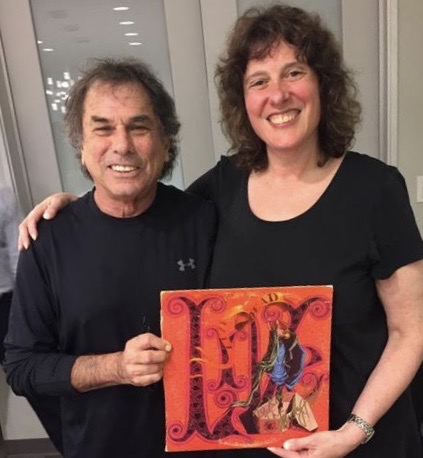
But once the artist gets to a certain level of popularity and notoriety, then they don’t really need the record company anymore because then they’ve built up their awareness, their sales base and their fan base. So they really can take over their own careers.
So that’s where you see somebody–
There was a guy —
Frank Ocean was an artist on Island records.
You probably know him. Okay. So, Frank Ocean. Brilliant artist. He signed with Island Records initially. And they bankrolled the making of his first album.
Really, really creative guy. Got critical praise for the album.
And after a certain bit of time, he realized [he] really [didn’t] need these guys anymore. [He could] make [his] own music. And so [he] just [made his] own record and put it out, and [didn’t] give it to the record company.
And the record company [could have] sued him because he was under contract.
So you kind of have to…how do I say it?
It’s kinda like when you get insurance.
When you get medical insurance, you have a choice. You can either get medical insurance and pay a really high premium. And then that insurance company, if you do get sick or you do get hurt, they tend to cover more because you’ve paid this high premium every month.
Or if you’re kind of a healthy person and you think I don’t want to keep paying $1000 every month for my medical insurance. Let me pay a premium of $300. And when I get sick, I’ll just have to pay a bigger deductible, and I’ll deal with it because I’m a healthy person and nothing bad is going to happen to me. And then something happens and then you get stuck.
So it’s really kind of a gamble.
And you try to be as educated as you can about the project and about what the marketplace is doing and what the different audiences are listening to.
And again, that leads back to data. That leads back to audience insights.
And this is why you as a business, any business or any industry, you really cannot survive these days without data, without insights into what the marketplace is doing.
And anybody who thinks that you can still operate based on rep or gut or relationships, I mean, maybe if you’re opening a general store in a town where there’s only 300 people. Yeah. Okay.
But in this world where you’re competing against hundreds of thousands of other products that are your competitors–
In terms of music, maybe you want to make money by licensing your music out to an advertising agency for a car commercial. There’s artists that have made more money by licensing their music out for TV commercials than any amount of spins or streams or touring could ever give them.
You have to have those insights.
You have to realize what it is about your product that is sellable in the marketplace.
And if it is something that’s a little bit ahead of the curve, then you have to just watch the timing and see how the rest of the world is catching up.
You talked about positioning and figuring out what is most marketable about your personal brand to your specific audience.
And you’ve worked with some incredible artists, Briney Spears, Hootie & the Blowfish, Daft Punk, to name a few.
How do you help them figure out what it is about their brand that is most marketable? Or discover what their audience wants from their brand?
I think with most artists these days, and certainly in the case of Hootie & the Blowfish, and to some extent, Daft Punk–
Maybe not so much Britney [Spears] because she was signed as an unknown.
But with Hootie, they had already developed a regional fan base in the South Carolina market, where they were from.
They had been playing around Charleston and Columbia and going up to North Carolina and back. And they had gotten the feedback from their audiences of what it was that their audiences wanted to hear, wanted to see, wanted them to look like, wanted them to interact with.
And they were very, very savvy guys. They all had business degrees from the University of South Carolina.
They made it their business to do the research and get a sense of what was popular at the time.
And then they had to decide whether or not they needed to hone themselves in a particular direction to meet that demand, while at the same time remaining unique and individual. Which is ultimately what they did.
I mean, when they started out, they were playing REM covers and covers of rock band songs that they didn’t write.
And then eventually it got to a point where they felt self confident enough to put pen to paper and say, “Hey, we have a sound here that seems to be connecting with audiences. Why don’t we try to take our hand and write some stuff ourselves and see how people receive it?”
They ultimately made a four-song EP and sold it at their shows. And it started to really sell.
People started talking about them, and they became more popular.
So by the time they came to the attention of Atlantic Records, they had already created a little bit of an identity for themselves.
Even as recently as somebody like Justin Bieber. Justin Bieber, as young as he was, was savvy enough to know that he needed to make videos of himself playing piano and put those videos out on YouTube.
And ultimately he was discovered by Usher, and the rest is history.
He had the raw talent, but it isn’t so much about the raw talent. There’s lots of kids with raw talent.
It’s about understanding where to go to reach the audience that you want to reach.
Justin wanted to reach an audience, to appeal to kids that like thoughtful pop. YouTube was where it’s at to do that.
And now the streaming services, places like Spotify and YouTube music, and there’s lots of other independent music companies.
Streaming services are offering services to independent artists that want to work exclusively with them. Almost offering a lot of what a record company can offer, but doing it in a way that is so much more targeted and strategic because they have such a huge database of people that are subscribers to their services. They can trial and error, offer free samples of new music to people. They find out really quickly, without spending a whole lot of money, whether something is a win or lose.
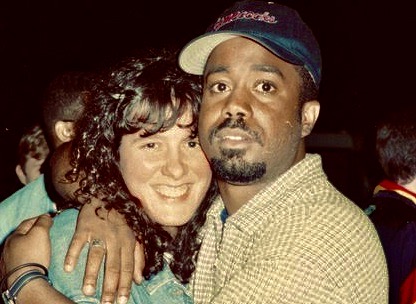
There’s a cost to pay for that, but you are given a little bit of a better idea of how it’s going to turn out. It’s not so much of a crap shoot as it used to be.
And I think that’s really great.
I think the streaming services are giving the labels a run for their money.
They also have the ability to reach so many more people than a record company can simply because of the distribution of the web. And record companies only are as big as their distribution center allows them to be.
So they are making deals with these streaming services and almost having the streaming services take the place of what distribution networks used to be. So it’s much more of a partnership if you will.
Which takes money out of the artist’s pocket. Because then the money has to be split three ways instead of two. But you’re reaching so many more people.
So ultimately, it’s kind of a long-range versus short-range goal. You may make a few less dollars initially, but in the long game, you’re going to make a lot more money because the longer these partners work with you, the more money is going to come in.
You mentioned with Hootie & the Blowfish and Daft Punk, they had more of an established idea of what their brand was going to be.
Was there more involvement for you with artists, like Britney Spears, who were young and didn’t know what their personal brand was going to be yet? Or was it more trying to help them find their authentic sense of self?
It was a combination of the two because Britney came from a very small town. She came from Kentwood, Louisiana, which is a town that’s under 3000 people, about an hour and a half Northwest of New Orleans.
And it’s not like it was a hotbed of artistic activity. It’s not like Athens, Georgia where REM and the B-52s are from. Or Los Angeles, New York, Chicago, etc. It wasn’t like she was coming from a place where there was a lot of artistic influence. She was coming from a place of being a small town, Southern girl.
Read another post: Lessons on Marketing and Branding from Rihanna
So she had that identity from her mother and from other women in her life, her family. They have a very close knit family.
But she also, through her experience with the Mickey Mouse Club and being in Florida and being around the beginnings of the whole boy band scene with Backstreet boys and NSYNC, she was getting an inkling that there was a bigger world out there.
And she actually did have a lot of talent as a singer and a dancer, and she was quite beautiful. So it was almost like a diamond in the rough.
She knew what she wanted to an extent, but she didn’t quite know how to sculpt it.
When she came to the record company, it was a matter of taking this girl who had natural beauty, had natural ability as a dancer and could sing.
But how do we help her figure out her style that will appeal to a more national audience instead of just that small, regional, Southern belle? Can we figure out a makeup scheme for her that is wholesome and beautiful, but at the same time powerful?
Because we didn’t want her to lose that sense of herself. That sense of ambition and fearlessness that she exhibited very, very quickly
What are some of the challenges of building a brand for women like Britney Spears?
As much as everybody likes to criticize her for being sexualized, this was not some kind of major strategy that everybody sat around a conference room table at Jive Records and said, “We want her to be as sexy as possible. And we want her to show as much of her skin as possible and dance as sexy as possible.”
No, a lot of that had to do with who she wanted to be.
There’s something very threatening about that, but there’s also something very attractive and very powerful and almost feministic about it.
And that’s what we looked to present. So when we made, for instance, the Baby, One More Time video, where she’s wearing the Catholic schoolgirl outfit, and then she’s wearing like a cheerleader outfit, but not really. Then she’s wearing track pants and a halter top and her hair’s up and whatever.
If you look at that video closely, you see the dichotomy of this girl that is at once very confident and very sexy.
And she’s dancing down the middle of the high school hallway
But you also see her standing next to her locker, looking very sad. Like I’m lonely. And I must confess, I still believe. When I’m not with you, I lose my mind. Give me a sign.
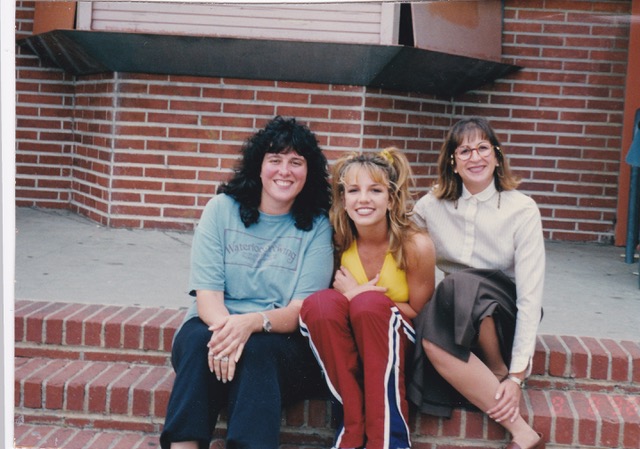
She’s vulnerable, but at the same time, she’s doing the Oh, baby, baby.
This is what a woman is.
This is what all women are. We all are this dichotomy.
You never really grow out of that– being on the precipice. That cliff’s edge of being a girl and being an adult. We want to hang onto our youth, but we also want to be powerful and in control and self-confident.
So you’re saying that the creator themself actually has a lot more agency in shaping their brand and in their ongoing marketing strategy, rather than a label or marketing agency having control over that?
Yeah. It should be a partnership.
Because maybe the artist doesn’t necessarily know how to deliver their message.
Like where is the car, and what highway do I drive down to get in to deliver my message?
And maybe I can give you that direction, and I can give you that opportunity.
But I can’t help you create your vision for yourself. I can’t help you create your look or your sound or your opinions, or how you communicate those opinions through your art.
All I can do is give you the stage. You have to get on it and perform right.
What I can also do is tell you where the stage should be located and what time you should get on that stage and for how long you should play.
And that is based on data and audience analysis that I’ve done based on other artists, based on what’s happening economically, and what’s happening regionally around the country.
So that’s all information I can give you that you can wrap up, that you can frame around yourself. We’re the frame of the painting. The artist and their music are the painting.
Has the availability of that data changed since the early days of Hootie & the Blowfish or Britney Spears brand building?
Oh, a lot. I mean, yeah.
The systems are much more sophisticated. Companies like Nielsen and Mediabase and [MRC Data], they’ve all expanded to the point where they can really drill down to knowing what time of day a particular song is being played. What other songs are being played around it, what the demographics are of the people that are listening to that particular music, what playlists are being created with that song, engulfed around other artists.
So they can figure out like-minded artists to market to. It’s much more sophisticated and drilled down and really is grounded in actual buying behaviors and participatory behaviors of the consumer than it used to be.
It used to be purely what you could see right in front of you performing to an audience and looking around and getting a sense of what that audience is.
Now you can actually go out and cherry pick those audiences from all over the country and all over the world and go directly to them.
Darius Rucker loved country music when he was in Hootie & the Blowfish, but he wasn’t making country records. But he always knew that he really loved country music.
He could make a country record and know exactly where to go with his country record, even if he never played country music live in his life. Where has Charlie pride been popular all these years? Who’s vocally another singer that sounds a lot like him? Who do we compare his voice to? And go cherry pick those audiences.
That’s really what makes for a real competitive marketplace, having these tools at your fingertips to be able to use.
Then it becomes, how do we make the message more interesting than our competitors? How do we use that behavioral information to shape the message and the product itself?
And the timing. Are we presenting this product at the right time, based on the economic environment that we’re in and who are we trying to reach?
Those are the challenges now.
How much of a difference do you think social media plays in artists being able to market themselves, test and experiment with their messaging, and secure increased exposure for their brand?
I think that if you can manage to, as a new artist, somehow get yourself associated with an established artist, then social media could be very, very helpful.
I like to think of…now his name just went right out of my head. Taylor Swift was an early supporter of the British, red haired, played stadiums, singer-songwriter. You know who I’m talking about?
He was somebody that Taylor Swift promoted really early on.
He was a busker in the tube stations of London.
Ed Sheeran.
So Ed Sheeran was somebody that Taylor Swift heard about really early on and she gave him a podium.
A lot of times it’s real luck, but it’s real. And it’s organic.
If you can do that and create a situation for yourself where that happens, great. But that’s kind of few and far between.
It has to be a groundswell from putting out messaging on social media that’s unique, thought provoking, interesting, very artistic.
And just putting it out there and letting people organically discover it. It has to be organic. It’s not something that you can, you cannot control it.
You can’t control it. You just have to just put out as much messaging as effectively as possible.
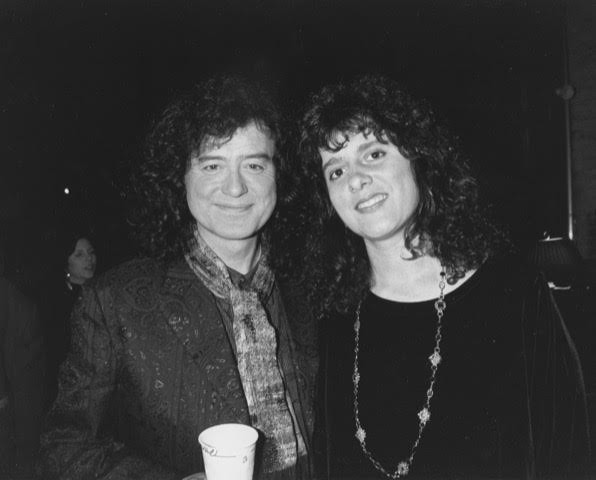
What you can control as far as social media is when it comes to advertising.
Mobile advertising has become more popular than ever because people are more mobile than ever. If you are advertising your product and using pixelated ads and different kinds of technologies to track your advertising and get more data from people that are actually looking at the ad, getting clicks through rates. And people actually buying the product or going as far as putting the product in the shopping cart and maybe not buying it.
But you can track that whole journey, that customer journey. And then get those insights and use that to help diagnose how often you put out your social media messaging and what kind of messaging.
What was it about that product that made it so attractive for somebody to put it in their shopping cart?
Maybe they didn’t ultimately buy it because they decided it was too expensive or they needed to buy something else first or they needed to pay the rent. So they’re going to go back and buy it in two weeks.
How do you capture those people? What was it about that particular moment that made them go as far as putting that item in the shopping cart?
And taking those analytics and using them for your campaign overall. How you move forward with future messaging and the frequency of that messaging.
That’s how you can really harness social media to me.
But you can’t force somebody to think that you’re good. It really just has to be, you have to get some kind of a reaction and build off whatever that reaction was that made that spark and just grow it.
Speaking of campaigns, you’ve worked with an incredible number of artists. We mentioned some of them. And then also with a bunch of incredible brands.
What have been some of your favorite marketing campaigns that you’ve worked on?
Oh, that’s easy. My favorite campaign that I was so proud of was–
I did two iPod commercials, and they were back to back. It was Daft Punk and then Gorillaz.
And this was something that took me four months of solid pitching over and over and over and over and over again to the ad agency for Apple.
I just kept going back to them and giving them new information about the artists, things they were doing that were successful, whether their song was getting played at certain radio stations, or they were getting certain reviews in certain music magazines, or they were touring or another artist was talking about them.
I just kept going back.
Finally Apple took the music to the agency and said, “Okay, what do you think?”
And they were like, boom, love it.
In fact Gorillaz did so well with that particular song they decided to use that album cover on all of the packaging for that particular edition of the iPod.
So it was not just the commercial placement. It wasn’t just the licensing placement for this $25 million TV campaign. It was having the album cover on the actual advertising and the packaging of the iPad. When you got the iPod at the Apple store, you got a picture of the iPod and on the screen was the Gorillaz album cover.
So that to me, that was like an explosive finale to a show that was so long and drawn out that you never thought it was going to actually end. And it just hit so hard. And I was so proud of that. I was really, really excited about it.
The other big win for me was with Starbucks.
At the time Starbucks was selling a lot of music in their cafes.
You could go to the cash register, and there’d be a featured album, like a CD of the month. Remember? And so it’s very, very competitive. I mean, it was just like musical chairs.
Yoou’ve got all these record companies putting out all these albums, and everybody wants to be in a Starbucks because you don’t want to have to compete against any other record.
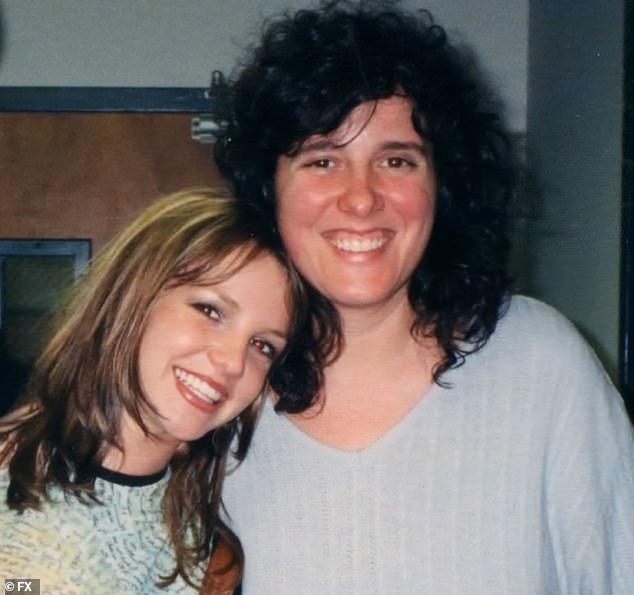
I was working on the new Rolling Stones album. I was at Virgin, and I said, we have to not just sell the new Rolling Stones album. We have to put together an album that’s exclusive to Starbucks that has Rolling Stones music on it that no one has ever heard, which means we have to go into the vault at EMI, their record company in the UK.
And we have to pull out these super rarities and we have to create an album of these rarities and bundle it with the new album or give people the opportunity just to buy the rarities [album] on its own.
So this was really fun for me because the Rolling Stones are like my favorite band of all time. So I was really having a good time going through the vault and looking at all these tracks and putting together this list of songs and everything.
And I put together this CD of 16 songs, and it was presented to Mick Jagger.
I thought he’s just going to rip it apart. And he’s going to be like, I hate this. I don’t like that song. I want this song there. And I just thought he’s going to just rip it.
He didn’t make one change.
He loved it.
And I was like, I have now died and gone to heaven because Mick Jagger has approved of my CD.
And so we did this deal with Starbucks and they loved it. It was very successful and talked about. There was a lot of press about it, and it was really fun. It was the first time that a band the age of the Rolling Stones had ever been in a place like Starbucks, which was appealing to people much, much younger.
It really gave them a lot of exposure to a much younger audience than they would have gotten otherwise.
So I was pretty proud of that. I was pretty pretty psyched about it.
What would you do differently if you were starting a career in marketing today?
Or do you have any last words of advice for marketers who are earlier in their career, looking to get started and do some great things like you?
Absolutely. If I could do it over again, I would absolutely become an expert at research and data insights and learning the programs of how to gather data.
[I would] become best friends or even husband and wife with Salesforce.
Like really embrace research and insights and analytics and understanding how to read it, how to use it, and how to build off of it. And that’s something that–
I never had that opportunity. And now it’s everywhere.
There are whole companies that you can go to just for that purpose. You can go hire an analytics, a data analytics company that has an audience database of millions and millions and millions of consumers. And you literally can license the use of these audiences.
They’re completely anonymized. So you’re not invading anybody’s privacy.
And you can use them to introduce your products. Not only to sell the product, but really get insights on how you can improve on the product, how you can offer other products.
This is something that the record companies are using to a small extent, but not enough. And this is why the music business is shrinking.
If they could somehow figure out how to use the analytics that are out there and offer to them to figure out how they can really do business better, it would grow again.
It really would.
I work for Clear Channel Outdoor.
It’s not a music company, but Clear Channel offers something that most people don’t even know exists, which is the ability to gather audience information off billboards. We can tell you tons of demographic information about people that are driving, walking, riding past a billboard, being exposed to a product that’s advertised on that billboard, and whether or not that billboard helped sell a certain amount of that product.
We can tell you down to what time they went by the billboard. What retailer they went to to buy the product that’s advertised on the billboard, how much money that person makes and what they do for a living, where they live.
We can give you so much information. It’s completely anonymous, but it’s based on audiences that we track that are in that particular geographical location, where that billboard is.

This is something that people don’t even realize is available now with out-of-home advertising. That was never, ever available.
Most record companies these days, when I try to tell them that they can buy a billboard for the new Drake album, they’re like, well, but what good is that going to do? It’s really expensive. And it doesn’t really sell any records.
I can prove to you that’s absolutely, patently untrue.
It used to be that you buy a billboard just to make the artists happy. “Oh, look at me up on a billboard.”
It has a real function now. And it’s trackable. It’s absolutely quantifiable.
And that is something that is really new and only developed in the last five years. It’s growing, and there’s going to be many more forms of media that offer that same kind of insight.
The smarter industries are grasping that and using it to their advantage.
The film industry has absolutely done the right thing by offering movies simultaneously as streamable versus being in the theater.
Does it mean that I don’t ever want to go to the theater again?
Absolutely not. I love going to movie theaters. I love that communal feeling. But if I have the opportunity to see a movie at home or see it in the theater, that gives me that choice. It’s two different kinds of experiences. I might even watch the movie twice.
So it just allows the studios to more effectively track their audiences and understand what movies are really selling and doing well based on the data that they receive from people streaming on those streaming services.
That’s a good thing.
Read another post: Lessons on Marketing and Branding from Rihanna
Interested in getting more content like this? Sign up for my newsletter and get fresh insight delivered to you weekly.

